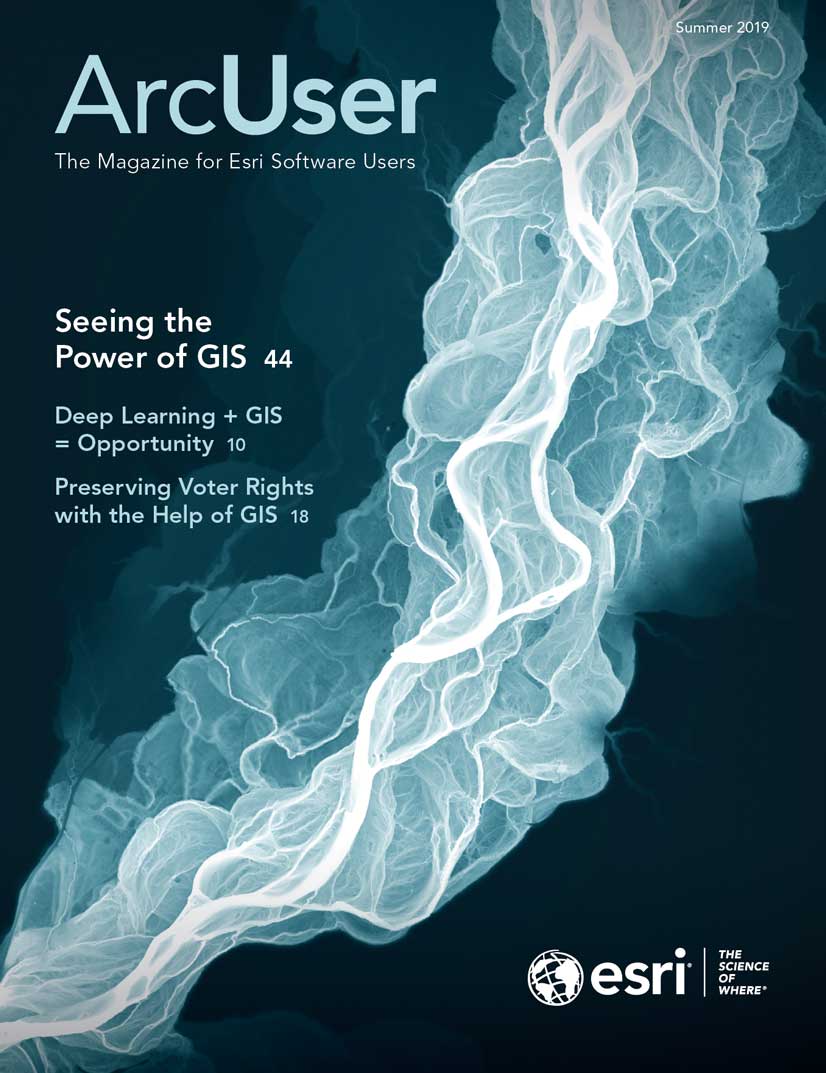What is a GIS leader?
A GIS leader is usually not associated with a specific job description, position, or title.
A GIS leader can be a manager, analyst, technician, administrator, developer, programmer, or specialist.
A GIS leader leads by example and serves as a partner and adviser who refines and enhances GIS business processes.
As a thought leader and change agent, a GIS leader approaches GIS with a business mind-set and understands how to integrate business intelligence. To lead an organization in developing and executing geospatial strategy, a GIS leader:
Provides innovative/creative solutions that solve complex geospatial problems.
- Coaches and guides through geospatial mentorship.
- Possesses domain expertise.
- Develops abilities to establish a GIS vision, designs a road map to get there, and leads the organization on the journey.
- Challenges everyone’s thinking.
- Encourages supervisors, managers, peers, and subordinates to embrace change.
- Inspires and motivates individuals.
- Cultivates and nurtures professional and personal growth.
- Fosters a teaching/learning environment within the organization that challenges members to apply critical thinking to geospatial problem solving.
- Evangelizes the use of GIS capabilities.
- Stimulates new ideas and concepts.
- Infuses GIS innovation into the organization’s culture.
- Consistently focuses on effectiveness, efficiency, and improvement through constant self-assessment and organizational assessment.
- Masters the ability to see what no one else sees, knows where to go, and figures out how to get there.
If you are not sure who the GIS leaders are in your organization, find out who’s doing the actions in the previous list. This will tell you who the GIS leaders are in your organization.
By now most of us know that managers and leaders are not the same thing. Managers tend to manage resources, projects, funds, and time, while leaders lead people, teams, and organizations. Over time, good leaders develop the ability to be change agents. While not all managers are leaders, based on my experience, the most effective leaders are great managers as well. During a time of crisis or chaos, you cannot manage your team out of the situation—you must lead them out of it.
I once heard another good way to explain this difference. A GIS manager reactively puts out fires. A GIS leader proactively ignites fires. That proactive component equates to passion. GIS leaders typically are passionate about what they are doing and have also learned to evangelize GIS within their organizations. Compare the concerns of a GIS manager and a GIS leader.
Sample list of a GIS manager’s daily fires
A customer who requested hard-copy products works in a remote location. How do we get them what they need?
Our data is in the wrong projection for the type of analysis we need to do. How do we want to tackle reprojecting all the data?
Due to a software upgrade, one of our automated workflows has broken. How do we proceed?
A customer has new requirements in a business area we have not worked in yet. What do we do?
Not everyone is trained in the new workflow process we’ve implemented. What’s the plan to resolve this?
Sample list of a GIS leader’s problem sets
How do we ensure we are utilizing and integrating the full potential and capabilities of our GIS platform/enterprise? What is the plan to address the gaps and shortfalls?
How do we provide for the sustained professional growth of our GIS workforce and ensure that growth is relevant, challenging, stimulating, and motivates the workforce?
How do we ensure the entire organization has integrated GIS into their business practices?
Are we getting at the biggest problems—the ones that keep department heads awake at night?
Are we effectively transferring experience and knowledge within our organization/team? How do we tell if this is happening? How do we know we are being effective?
Too often when we think of developing individual analysts, we think of the technical aspects of their development. Software skills, programming, database management, or analysis skills are areas we have become proficient at developing.
It is the soft skills we are missing. In “The largest skills gap managers see in IT workers isn’t technical,” the article’s author Lila MacLellan mentions that LinkedIn CEO Jeff Weiner sees a need in the future for skills such as written communication, oral communication, team-building, and leadership skills—better known as soft skills.
“Next-Generation IT Talent Strategies,” a recent report by CISCO on the state of IT hiring and training, surveyed over 600 companies that generated over $1 billion in revenue annually. I feel that the report is significant because I see the GIS and IT worlds as tightly connected with many similarities. I’m confident trends in one are visible in the other. The CISCO report showed how business leaders addressed questions on gaps in business skills, and the survey responses were very heavy on soft skills. Their top six gaps can easily be addressed through mentoring and leader development.
To return to the original question, what is a GIS leader, a GIS leader is a GIS change agent within the organization who champions all GIS initiatives and who advises, mentors, and educates all on GIS capabilities and usage. As a practitioner of The Science of Where, a leader applies geography through GIS while navigating the expanding world of mapping and location intelligence. Through selfless leadership, a leader provides a GIS vision and the geospatial strategy to successfully achieve it.
How do you get GIS leaders?
You make them.
You mentor them.
You create your own.
Paying it forward is something we all should be doing with those whom we come in contact with in our profession. Whether you use the term GIS, geospatial, or GEOINT [geospatial intelligence], it’s all location intelligence and it’s all about practicing The Science of Where.
Whatever your personal flavor of geospatial is, ask yourself who your leaders are. Are you are one of those leaders? What are you doing to develop leaders and create more of them? Together, we can work to fill the soft skill gaps within our profession and industries through junior leader development; managing our bosses; and effective up, down, and lateral mentoring.




